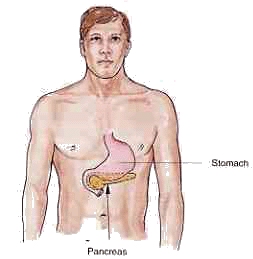


Open Sesame
Write-ups at a glance
Write-ups at a glance
Search by Google:



Disclaimer: All material on the site, www.astrovidya.com are for entertainment purposes only and no guarantee is implied as to the accuracy of contents or advertisements contained in or linked to this website. The contents are based on ancient cannons of astrology and should not be interpreted as legal, financial, political, religious, ethical, medical, psychological, psychiatric or any other specialist advice. The user is wholly responsible for his choices, decisions, judgments and risks. In no event shall the site be liable for any direct, indirect, incidental, punitive or consequential damages of any kind whatsoever with respect to its service, materials and products. By using the services you confirm that you are over 18 and that you understand and agree with these terms of Disclaimer. If you disagree with any part of these terms and conditions, please egress the website.
Diabetes is a disorder of metabolism-the way our bodies use digested food for growth and energy. Most of the food we eat is broken down into glucose, the form of sugar in the blood. Glucose is the main source of fuel for the body. After digestion, glucose passes into the bloodstream, where it is used by cells for growth and energy. For glucose to get into cells, insulin must be present. Insulin is a hormone produced by the pancreas, a large gland behind the stomach. When we eat, the pancreas automatically produces the right amount of insulin to move glucose from blood into our cells. In people with diabetes, however, the pancreas either produces little or no insulin, or the cells do not respond appropriately to the insulin that is produced. Glucose builds up in the blood, overflows into the urine and passes out of the body in the urine. Thus, the body loses its main source of fuel even though the blood contains large amounts of glucose. Diabetes is associated with long-term complications that affect almost every part of the body. The disease often leads to blindness, heart and blood vessel disease, stroke, kidney failure, amputations and nerve damage. Uncontrolled diabetes may complicate pregnancy. Birth defects are more common in babies born to women with diabetes. In absence of proper utilization of sugar the patient begins to develop various physical ailments like frequent urination, excessive tiredness, loss of weight, blurring of vision, general weakness and skin disorders. Chronic diabetic patients may suffer hypertension, kidney and eye disorders. There are three types of diabetes.
DIABETES MANAGEMENT THROUGH YOGA & AYURVEDA

Type 1 diabetes: The immune system attacks and destroys the insulin-producing beta cells in the pancreas. At present, scientists do not know exactly what causes the body’s immune system to attack the beta cells, but they believe that autoimmune, genetic, and environmental factors, possibly viruses, are involved. Type 1 diabetes occurs equally among males and females but is more common in white races of European countries.
Type 2 diabetes: This is associated with older age, obesity, family history of diabetes, physical inactivity. About 80 percent of people with type 2 diabetes are overweight. When type 2 diabetes is diagnosed, the pancreas is usually producing enough insulin, but for unknown reasons the body cannot use the insulin effectively, a condition called insulin resistance. After several years, insulin production decreases. The result is glucose builds up in the blood and the body cannot make efficient use of its main source of fuel. Type 2 diabetes is more common in older people, especially in people who are overweight and occurs more often in African and Asian population.
Type 3 diabetes (Gestational diabetes): Some women develop gestational diabetes late in pregnancy. Although this form of diabetes usually disappears after the birth of the baby, women who have had gestational diabetes have a 20 to 50 percent chance of developing type 2 diabetes within 5 to 10 years. Maintaining a reasonable body weight and being physically active may help prevent development of type 2 diabetes.
Type 2 diabetes: This is associated with older age, obesity, family history of diabetes, physical inactivity. About 80 percent of people with type 2 diabetes are overweight. When type 2 diabetes is diagnosed, the pancreas is usually producing enough insulin, but for unknown reasons the body cannot use the insulin effectively, a condition called insulin resistance. After several years, insulin production decreases. The result is glucose builds up in the blood and the body cannot make efficient use of its main source of fuel. Type 2 diabetes is more common in older people, especially in people who are overweight and occurs more often in African and Asian population.
Type 3 diabetes (Gestational diabetes): Some women develop gestational diabetes late in pregnancy. Although this form of diabetes usually disappears after the birth of the baby, women who have had gestational diabetes have a 20 to 50 percent chance of developing type 2 diabetes within 5 to 10 years. Maintaining a reasonable body weight and being physically active may help prevent development of type 2 diabetes.
Management of diabetes:
People with diabetes must take responsibility for their day-to-day care. Much of the daily care involves keeping blood glucose levels from going too low or too high. Healthy eating, physical activity and taking insulin are the basic therapies for diabetes. The amount of insulin must be balanced with food intake and daily activities. Blood glucose levels must be closely monitored through frequent blood glucose checking. People with diabetes also monitor blood glucose levels several times a year with a laboratory tests. At least 65% of those with diabetes die from heart disease or stroke. Managing diabetes is more than keeping blood glucose levels under control-it is also important to manage blood pressure and cholesterol levels. Smoking cessation can also help lower risk of stroke.
People with diabetes must take responsibility for their day-to-day care. Much of the daily care involves keeping blood glucose levels from going too low or too high. Healthy eating, physical activity and taking insulin are the basic therapies for diabetes. The amount of insulin must be balanced with food intake and daily activities. Blood glucose levels must be closely monitored through frequent blood glucose checking. People with diabetes also monitor blood glucose levels several times a year with a laboratory tests. At least 65% of those with diabetes die from heart disease or stroke. Managing diabetes is more than keeping blood glucose levels under control-it is also important to manage blood pressure and cholesterol levels. Smoking cessation can also help lower risk of stroke.















